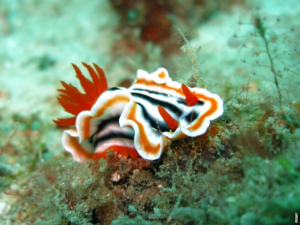Adapting to the Environment
Fish are fascinating creatures that have evolved various ways to survive in their environments. One of the most intriguing aspects of their biology is their ability to change colors. From vibrant hues to subtle shades, fish can transform their appearance to blend in, communicate, and even intimidate. Let’s dive into the mesmerizing world of fish coloration.
The Science Behind Color Change
Fish change color through a process called chromatophore expansion and contraction. Chromatophores are specialized pigment-containing cells found in the skin of fish. These cells contain different pigments, such as melanin (brown or black), carotenoids (red, orange, or yellow), and purines (reflective and iridescent). When the fish wants to change color, the chromatophores expand or contract, altering the pigmentation of their skin.
Camouflage Mastery
One of the most common reasons fish change color is for camouflage. Many species have the ability to match their surroundings by adjusting their pigmentation. This adaptation allows them to hide from predators or sneak up on prey. For example, the cuttlefish is a master of disguise, capable of rapidly changing its skin color and texture to blend seamlessly with its environment. Its remarkable camouflage skills make it nearly invisible to both predators and prey.
Social Signaling and Communication
Color change in fish is not only about concealment but also serves as a means of communication. Some species alter their colors to assert dominance, attract mates, or signal aggression. Male betta fish, also known as Siamese fighting fish, are famous for their vibrant displays during courtship. They flare their fins and change their colors to impress females and intimidate rival males. The intensity of their hues often correlates with their overall health and genetic fitness.
Emotional State and Stress
Fish can also change colors in response to their emotional state or stress levels. Studies have shown that some fish, such as the tilapia, display darker hues when they are agitated or anxious. Conversely, certain species, like the neon tetra, exhibit brighter colors when they are happy and content. These color changes provide valuable insights into the well-being and mood of these aquatic creatures.
Post
Post
Environmental Factors
Apart from internal factors, external elements such as light, temperature, and water quality can influence fish coloration. Exposure to different wavelengths of light can cause certain pigments to reflect or absorb specific colors, resulting in a change in appearance. Additionally, temperature fluctuations can affect the metabolic rate of fish, impacting their ability to produce and distribute pigments. Changes in water quality, such as pH levels or pollution, may also lead to alterations in fish coloration.
Unraveling Nature’s Masterpiece
Understanding the mechanisms behind color change in fish is a never-ending quest for scientists and researchers. By studying these remarkable adaptations, we gain valuable insights into the intricate workings of nature. Fish coloration serves as a beautiful testament to the diversity and ingenuity of life on our planet’s aquatic realms.



